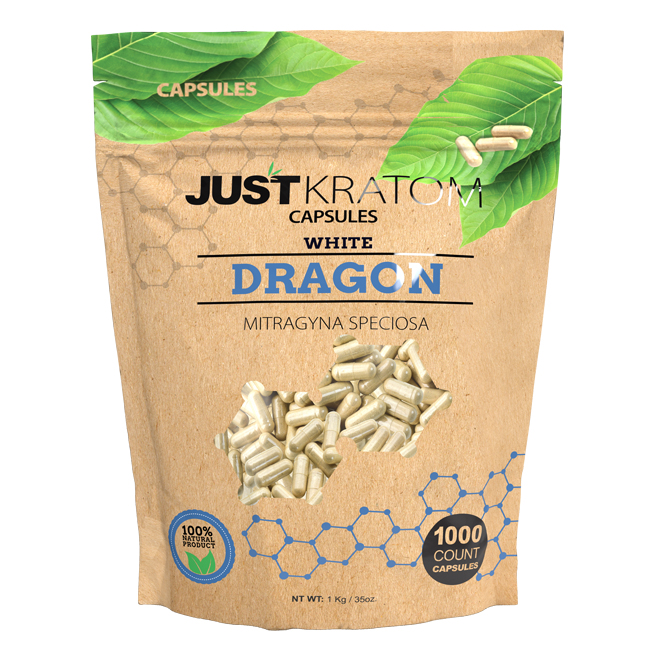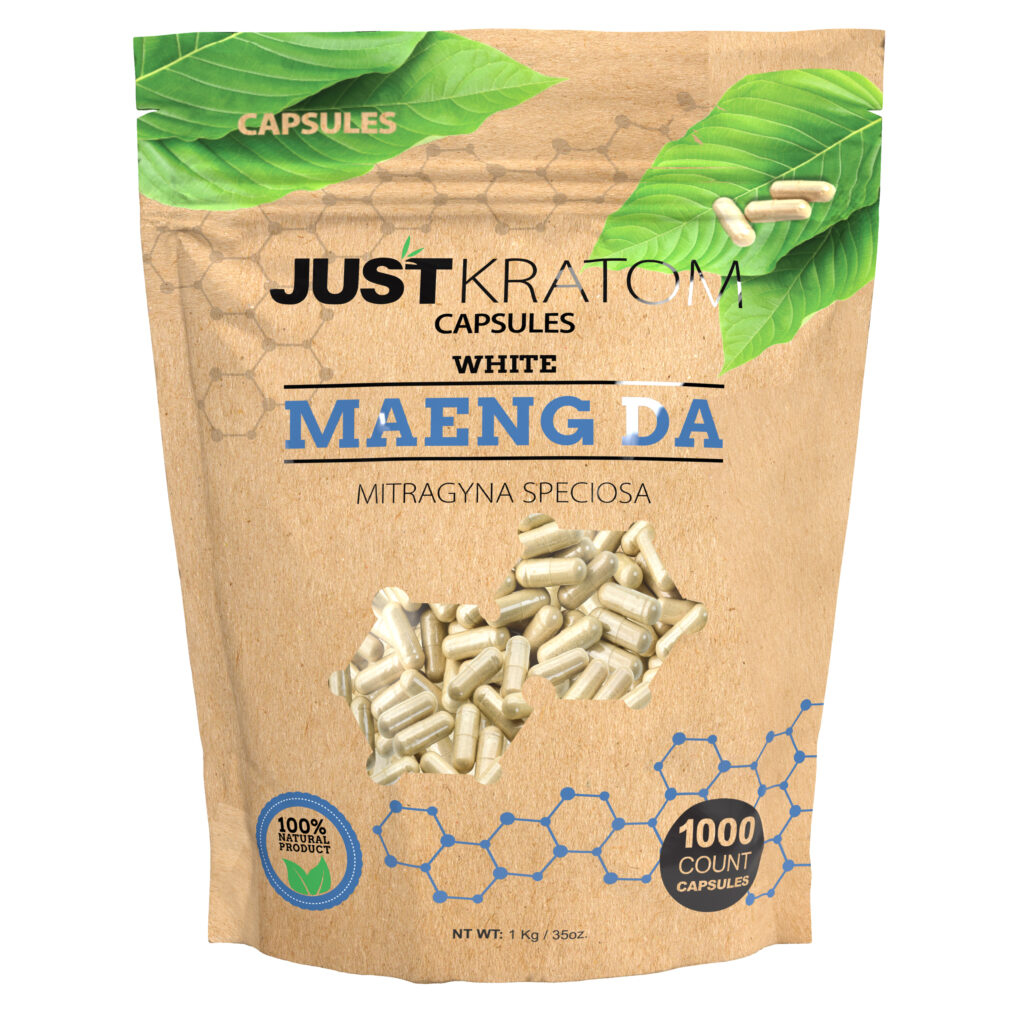The History Of Kratom And Its Use In Capsule Form

Origins & Traditional Use
Kratom, derived from the leaves of the Mitragyna speciosa tree native to Southeast Asia, boasts a rich history entwined with traditional medicinal practices. For centuries, indigenous communities have utilized kratom for its purported analgesic, stimulating, and mood-boosting properties, integrating it into various aspects of their daily lives.
Early History in Southeast Asia
Kratom, derived from the leaves of the Mitragyna speciosa tree native to Southeast Asia, boasts a rich history entwined with traditional medicinal practices. For centuries, indigenous communities have utilized kratom for its purported analgesic, stimulating, and mood-boosting properties, integrating it into various aspects of their daily lives.

The exact origins of kratom use are shrouded in the mists of time, but historical accounts suggest that its cultivation and consumption date back centuries.
- Early documented evidence suggests that kratom was used for medicinal purposes as far back as the 16th century.
- During this era, it was commonly employed to alleviate pain, fatigue, and mental distress by indigenous populations throughout Southeast Asia.
Traditional Medicinal Practices
The exact origins of kratom use are shrouded in the mists of time, but historical accounts suggest that its cultivation and consumption date back centuries.
- Early documented evidence suggests that kratom was used for medicinal purposes as far back as the 16th century.
- During this era, it was commonly employed to alleviate pain, fatigue, and mental distress by indigenous populations throughout Southeast Asia.
Traditional medicinal practices varied across different regions and cultures.
- In some communities, kratom was chewed fresh or brewed into tea as a way to manage labor pains during childbirth.
- Others utilized it to treat respiratory ailments, such as coughs and colds.
- Kratom was also believed to possess properties that could enhance mental clarity and focus, making it popular among farmers and laborers.
Spread and Popularity
Spread and popularity of any substance are often intertwined with cultural exchange, accessibility, and perceived benefits. Historically, kratom’s use has been deeply ingrained in the cultures of Southeast Asia, passed down through generations as part of traditional medicinal practices. Its availability within these communities, coupled with its purported analgesic and stimulating effects, likely contributed to its widespread adoption for various purposes.
Global Expansion in the 20th Century
The 20th century witnessed a significant shift in kratom’s geographic reach and popularity. As Southeast Asia became increasingly interconnected with the global economy, migration patterns brought kratom knowledge and consumption to new parts of the world.
The rise of international travel and trade networks further facilitated the spread of kratom. Individuals returning from Southeast Asia introduced kratom to their home countries, sparking curiosity and experimentation among new audiences.
While initial awareness of kratom remained largely confined to certain cultural communities, its reputation for pain relief and mood enhancement began to gain traction in alternative health circles. The internet played a crucial role in amplifying this growing interest by providing platforms for information sharing and online marketplaces.
Growth of Online Markets
Spread and popularity of any substance are often intertwined with cultural exchange, accessibility, and perceived benefits. Historically, kratom’s use has been deeply ingrained in the cultures of Southeast Asia, passed down through generations as part of traditional medicinal practices. Its availability within these communities, coupled with its purported analgesic and stimulating effects, likely contributed to its widespread adoption for various purposes.
The 20th century witnessed a significant shift in kratom’s geographic reach and popularity. As Southeast Asia became increasingly interconnected with the global economy, migration patterns brought kratom knowledge and consumption to new parts of the world.
The rise of international travel and trade networks further facilitated the spread of kratom. Individuals returning from Southeast Asia introduced kratom to their home countries, sparking curiosity and experimentation among new audiences.
While initial awareness of kratom remained largely confined to certain cultural communities, its reputation for pain relief and mood enhancement began to gain traction in alternative health circles. The internet played a crucial role in amplifying this growing interest by providing platforms for information sharing and online marketplaces.
Modern Applications & Capsule Form
The history of kratom is deeply intertwined with traditional medicine in Southeast Asia, where the leaves of the Mitragyna speciosa tree have been used for centuries to alleviate pain, fatigue, and mental distress.
Pharmacology and Potential Benefits

The exact origins of kratom use are shrouded in the mists of time, but historical accounts suggest that its cultivation and consumption date back centuries.
- Early documented evidence suggests that kratom was used for medicinal purposes as far back as the 16th century.
- During this era, it was commonly employed to alleviate pain, fatigue, and mental distress by indigenous populations throughout Southeast Asia.
Traditional medicinal practices varied across different regions and cultures.
- In some communities, kratom was chewed fresh or brewed into tea as a way to manage labor pains during childbirth.
- Others utilized it to treat respiratory ailments, such as coughs and colds.
- Kratom was also believed to possess properties that could enhance mental clarity and focus, making it popular among farmers and laborers.
Spread and popularity of any substance are often intertwined with cultural exchange, accessibility, and perceived benefits. Historically, kratom’s use has been deeply ingrained in the cultures of Southeast Asia, passed down through generations as part of traditional medicinal practices. Its availability within these communities, coupled with its purported analgesic and stimulating effects, likely contributed to its widespread adoption for various purposes.
The 20th century witnessed a significant shift in kratom’s geographic reach and popularity. As Southeast Asia became increasingly interconnected with the global economy, migration patterns brought kratom knowledge and consumption to new parts of the world.
The rise of international travel and trade networks further facilitated the spread of kratom. Individuals returning from Southeast Asia introduced kratom to their home countries, sparking curiosity and experimentation among new audiences.
While initial awareness of kratom remained largely confined to certain cultural communities, its reputation for pain relief and mood enhancement began to gain traction in alternative health circles. The internet played a crucial role in amplifying this growing interest by providing platforms for information sharing and online marketplaces.
The history of kratom is deeply intertwined with traditional medicine in Southeast Asia, where the leaves of the Mitragyna speciosa tree have been used for centuries to alleviate pain, fatigue, and mental distress.
Production and Consumption Trends
Kratom, derived from the leaves of the Mitragyna speciosa tree native to Southeast Asia, boasts a rich history entwined with traditional medicinal practices. For centuries, indigenous communities have utilized kratom for its purported analgesic, stimulating, and mood-boosting properties, integrating it into various aspects of their daily lives.
The exact origins of kratom use are shrouded in the mists of time, but historical accounts suggest that its cultivation and consumption date back centuries.
- Early documented evidence suggests that kratom was used for medicinal purposes as far back as the 16th century.
- During this era, it was commonly employed to alleviate pain, fatigue, and mental distress by indigenous populations throughout Southeast Asia.
Traditional medicinal practices varied across different regions and cultures.
- In some communities, kratom was chewed fresh or brewed into tea as a way to manage labor pains during childbirth.
- Others utilized it to treat respiratory ailments, such as coughs and colds.
- Kratom was also believed to possess properties that could enhance mental clarity and focus, making it popular among farmers and laborers.
Spread and popularity of any substance are often intertwined with cultural exchange, accessibility, and perceived benefits. Historically, kratom’s use has been deeply ingrained in the cultures of Southeast Asia, passed down through generations as part of traditional medicinal practices. Its availability within these communities, coupled with its purported analgesic and stimulating effects, likely contributed to its widespread adoption for various purposes.
The 20th century witnessed a significant shift in kratom’s geographic reach and popularity. As Southeast Asia became increasingly interconnected with the global economy, migration patterns brought kratom knowledge and consumption to new parts of the world.
The rise of international travel and trade networks further facilitated the spread of kratom. Individuals returning from Southeast Asia introduced kratom to their home countries, sparking curiosity and experimentation among new audiences.
While initial awareness of kratom remained largely confined to certain cultural communities, its reputation for pain relief and mood enhancement began to gain traction in alternative health circles. The internet played a crucial role in amplifying this growing interest by providing platforms for information sharing and online marketplaces.
The history of kratom is deeply intertwined with traditional medicine in Southeast Asia, where the leaves of the Mitragyna speciosa tree have been used for centuries to alleviate pain, fatigue, and mental distress.
Concerns and Regulations Surrounding Kratom Capsules
Modern applications of kratom often focus on its purported analgesic, stimulating, and mood-boosting effects. Kratom capsules offer a convenient and standardized way to consume the herb, making it more accessible to those seeking these benefits.
Concerns surrounding kratom use center primarily around potential adverse effects and regulatory uncertainties.
Some studies suggest that high doses of kratom can lead to nausea, vomiting, constipation, and elevated heart rate. There are also concerns about its potential for addiction and withdrawal symptoms, especially with prolonged or heavy use.
Moreover, the lack of comprehensive regulation surrounding kratom production and sale raises concerns about product quality, purity, and potential contamination.
Regulatory bodies like the FDA in the United States have taken steps to monitor and address these concerns. However, kratom remains a substance with a complex regulatory landscape, varying from country to country.
Ongoing research is crucial for a better understanding of kratom’s long-term effects and potential risks, ultimately informing evidence-based policies and guidelines regarding its use.
Future Perspectives
The history of kratom stretches back centuries, deeply embedded in the traditional medicine practices of Southeast Asia. Its use as a remedy for pain, fatigue, and mental distress has been passed down through generations, solidifying its place within these cultures. As kratom’s global awareness grows, modern applications focus on its purported analgesic, stimulating, and mood-enhancing properties, often delivered through convenient capsule forms. However, alongside this growing interest comes the need for comprehensive research to fully understand both its potential benefits and risks.
Research Developments and Clinical Trials
Future perspectives on kratom research are promising, with ongoing studies aiming to shed light on its complex mechanisms of action, potential therapeutic applications, and associated risks.
One key area of research focuses on elucidating how kratom interacts with the human body’s opioid receptors, potentially offering insights into its analgesic effects and addiction liability.
Researchers are also investigating kratom’s potential in managing pain, particularly chronic pain conditions. Studies exploring its efficacy for treating conditions like osteoarthritis, fibromyalgia, and migraines are underway.
Furthermore, preliminary research suggests that kratom may possess anti-inflammatory properties, which could have implications for treating various inflammatory disorders.
Clinical trials will play a crucial role in evaluating the safety and efficacy of kratom for specific medical conditions. These trials will need to address concerns regarding dosage, potential side effects, drug interactions, and long-term health consequences.
As research progresses, regulatory bodies may develop guidelines and policies that balance the potential benefits of kratom with its associated risks.
This could involve establishing standardized quality control measures for kratom products, promoting responsible use practices, and exploring potential therapeutic applications under medical supervision.
Evolving Legal Landscape
The future of kratom is likely to be shaped by ongoing research and evolving regulatory landscapes. While its traditional use in Southeast Asia has long been recognized, growing global interest necessitates a deeper understanding of its pharmacological properties, potential benefits, and risks.
Key areas of focus for future research include:
* **Mechanism of action:** Understanding how kratom interacts with the body’s opioid receptors and other neurotransmitter systems will be crucial for elucidating its analgesic, stimulating, and mood-altering effects.
* **Therapeutic applications:** Clinical trials are needed to assess the efficacy and safety of kratom for specific medical conditions, such as chronic pain, inflammation, and mental health disorders.
* **Risk assessment:** Further research is required to fully understand the potential for addiction, withdrawal symptoms, and long-term health effects associated with kratom use.
Regulatory bodies will likely play a pivotal role in shaping the future of kratom by:
* **Developing standardized quality control measures:** Ensuring the purity and safety of kratom products through rigorous testing and regulation is essential to mitigate potential risks.
* **Establishing guidelines for responsible use:** Educating the public about safe dosage recommendations, potential interactions with other medications, and signs of misuse will be crucial.
* **Exploring potential therapeutic applications under medical supervision:** If research confirms kratom’s effectiveness for specific conditions, regulations may evolve to allow for its controlled use in a clinical setting.
The evolving legal landscape surrounding kratom will likely reflect ongoing scientific advancements and societal discussions about its benefits and risks. The goal is to strike a balance between fostering responsible access to potential therapeutic benefits while minimizing potential harm.
Order Kratom capsules for mood improvement
- The History Of Kratom And Its Use In Capsule Form - June 5, 2025
- Brow Lift Treatment Near New Malden And Coombe, Surrey - June 4, 2025
- Brow Lift Treatment Near Ash, Surrey - June 3, 2025
